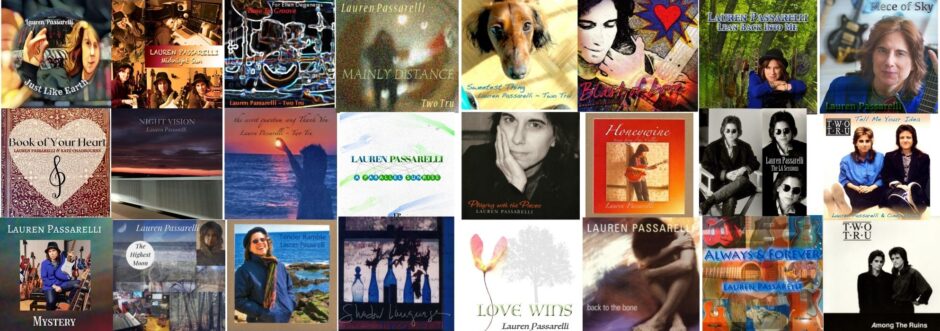7 Thoughts on Teaching and Learning
by Lauren Passarelli
There is no greater technique book for guitar than William G Leavitt’s, A Modern Method For Guitar (a 3 book series). Learning from a great book puts you miles ahead of all the do it yourselfers that never get the proper foundation to guitar learning. This book teaches you harmony, theory, music notation, how to read, improvise, scales, chords, arpeggios, string skipping exercises, speed studies, and more specifically for guitar. Bill Leavitt was the third guitarist to ever attend Berklee. He started the Berklee Guitar dept. (The largest guitar dept. in the world.) He has many books and wrote most of the Berklee guitar curriculum. Diving into the real guitar work is where it’s at to be a great guitar player. You can learn it on your own, as many of my heroes did, but it took them longer to be the player they desired to be. A great book is always a short cut.
My students know they are accountable for their own greatness. I always encourage them to care about their own development and realize that they are their own best teachers. The real growth begins at the crossroads where my teaching style intersects with the student’s learning style.
— Lauren Passarelli
Recording your playing and listening is crucial. You have to know how you really sound: how well you play in tune and in time, and how cleanly.
Paying attention to detail is important because a player’s expressiveness comes across in the subtleties. Be aware and be accurate in every note you play.
Listen to and imitate great players. You didn’t learn how to speak a language without listening to how the language sounds. Trying to create music without listening to how many fabulous players have done it before you is like having to rediscover electricity every time you want to turn on a light. I often imagine I am one of my favorite players, writers, engineers, arrangers or producers and ask myself, what would they do here? How would they play it, write it, fix it?
Learn how to make a cool noise. You develop your own sound by learning how to speak — and by living a life so you have something to say. The more ability and sounds you can confidently add to your playing, the more range your voice will have.
Save all recordings and videos so you can see and hear your own progress as the years go by. They’re like photographs to look back on. Not only is it fun and interesting in retrospect, but you gain perspective and compassion for your eager, creative self.
I don’t believe in the guitar trap. Personally, I write in many keys and in many tunings. I love capos because you can get open strings in any key. When I write I don’t think about harmony or theory — I explore. My ear and my heart choose where my fingers go. I analyze it later. I love harmony and many colors & interesting voicings. Your compositions will sound less like “guitar songs” when you have more ability & guitar voicing choices to choose from.
Respect the muse. When I’m trying to figure out what’s right for a song, the answers always come if I’m patient and listening well. I treat the song like its own entity: What do you need now? Is this the right bass line for you? What would be better? You have to respect the muse. I also record every idea I want to remember, whether it’s on my phone or on my laptop — whatever it takes to recall the spark. If I don’t have time to develop it in that moment, at least the idea is preserved so I can hear it again with the energy and magic from when it first came.
Lauren Passarelli is a Guitar Professor at Berklee College of Music, a multi instrumentalist, performing songwriter & recording engineer. http://www.youtube.com/user/laurenpass#p/u
Editor’s Note: Beginning this November, TrueFire will be welcoming new students with guidelines for Perfect Practice. Thanks to Lauren Passarelli for contributing her thoughts.
